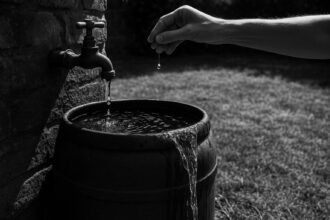Almost 2,000 people fell ill after swimming and surfing in Scotland, with campaigners blaming sewage leaks and demanding better safety measures from Scottish Water.
Almost 2,000 individuals across Scotland reported falling ill after engaging in water activities such as swimming and surfing in the year 2024, according to a recent report. The campaign group Surfers Against Sewage has attributed these illnesses to an alarming increase in sewage leaks that have contaminated the nation’s waterways. They have expressed concerns over Scottish Water’s management of the situation, suggesting that the public is inadequately informed about the severity of the crisis.
Data from Scottish Water reveals that wastewater was discharged into various bodies of water—including rivers, lochs, and seas—24,000 times throughout 2024. However, Surfers Against Sewage has highlighted that this figure only represents 6.7 per cent of the entire sewer network, indicating that the actual number of spills could soar to an estimated 365,000.
Surfers Against Sewage maintains that Scottish Water leads the United Kingdom in discharge rates among water companies. Their annual Water Quality Report noted that they documented 1,893 instances of sickness among surfers, swimmers, and paddleboarders around Scotland’s waters last year.
Giles Bristow, the Chief Executive of Surfers Against Sewage, stated, “These sewage figures are appalling, and yet they are likely just the tip of the fatberg, due to Scottish Water’s reckless approach to monitoring and public safety.” He described Scotland’s waterways as “stunning” destinations for aquatic sports and recreation, yet cautioned that many people may not be aware of the dangers they face. He pointed out the absence of legal requirements for issuing sewage alerts in Scotland, leaving water users unaware of whether the waters are safe for recreation.
Among those affected is Shelley Sim, a carer hailing from East Lothian, who experienced severe gastroenteritis and dehydration after a swimming outing for a friend’s birthday. Sim was hospitalized for five days, and subsequent medical consultations led to a diagnosis of cryptosporidium, a diarrheal disease associated with contaminated water. Reflecting on her experience, Sim noted that she is now more cautious about her water activities. “I’m no longer swimming every day, and I’m more cautious about getting into the water,” she shared. “The first thing I do now is check outfalls… it comes from a place of fear.”
Surfers Against Sewage indicated that the documented cases of illness may only account for a fraction of the true incidence of sickness linked to contaminated waters, estimating that the total sick days attributable to water pollution could amount to nine years’ worth.
Despite operating thorough sewage alert systems in England and Wales, Surfers Against Sewage has highlighted the lack of a similar framework in Scotland. Giles Bristow emphasised that without immediate action from Scottish Water, water users would continue to risk their health each time they enter the water.
In response to the criticisms, Professor Simon Parsons, the Director of Environment, Planning and Assurance at Scottish Water, asserted that the overall quality of Scotland’s water environment remains high, with 87 per cent of water bodies classified as good or better. He mentioned a significant investment of £500 million, on top of £2 billion invested over the past decade, aimed at improving water quality to meet national standards. He pointed out that more than one billion litres of wastewater is processed by the company’s treatment systems daily and stressed their commitment to enhancing monitoring and preventing pollution incidents.
The ongoing investigation into the effects of sewage contaminations continues to unfold, with calls from various stakeholders for increased transparency and improved safety measures to protect public health in Scotland’s waterways.
Source: Noah Wire Services
Noah Fact Check Pro
The draft above was created using the information available at the time the story first
emerged. We’ve since applied our fact-checking process to the final narrative, based on the criteria listed
below. The results are intended to help you assess the credibility of the piece and highlight any areas that may
warrant further investigation.
Freshness check
Score:
9
Notes:
The narrative references events from 2024, which suggests that the content is relatively recent. However, without specific dates for when the report was published, it’s hard to judge its exact freshness.
Quotes check
Score:
8
Notes:
The narrative includes quotes from Giles Bristow and Shelley Sim. Without specific online sources for these quotes, it is challenging to verify their originality. However, they appear to be unique to this narrative.
Source reliability
Score:
8
Notes:
The narrative originates from the Daily Record, which is a known publication. It cites specific data and organizations, such as Scottish Water and Surfers Against Sewage, adding credibility.
Plausability check
Score:
8
Notes:
The claims about sewage contamination and related illnesses are plausible, given the historical context of water pollution issues in Scotland and the UK. However, some figures and estimates provided by Surfers Against Sewage, like the total potential sewage spills, would require further verification.
Overall assessment
Verdict (FAIL, OPEN, PASS): PASS
Confidence (LOW, MEDIUM, HIGH): MEDIUM
Summary:
The narrative is generally reliable due to its recent context and quoting from known figures, although some figures need additional verification for full accuracy.













